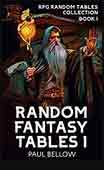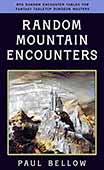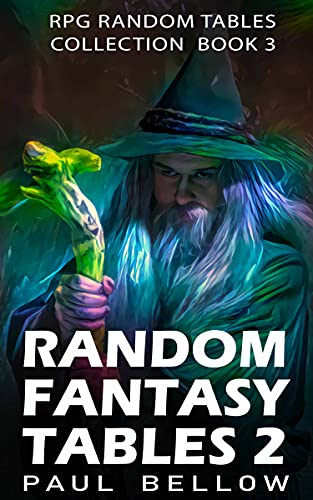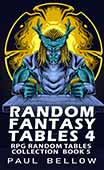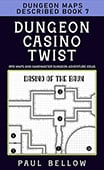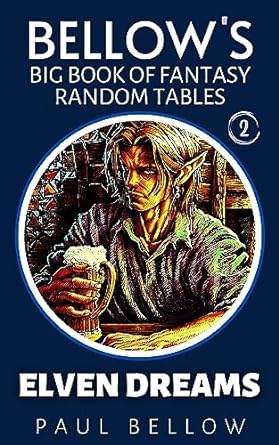Tabletop roleplaying games thrive on the tapestry of relationships woven between adventurers and the denizens of their worlds. Yet, for all the drama that simmers in musty taverns and on windswept battlefields, the mechanics that govern how NPCs feel about players can strangely lack depth. Alignment charts flatten moral nuance into tidy boxes. Reputation systems often reduce multifaceted bonds to simple thumbs up or down. It’s easy, even tempting, to let such binary markers drive encounters, but they rarely capture the ebb and flow of trust, betrayal, or hard-won camaraderie that makes great stories memorable.
Enter the advanced NPC loyalty system—a method of tracking interpersonal (or inter-factional) relationships that goes far beyond the rote hero/villain divide. This approach measures favor, enmity, influence, and mutual benefit along a dynamic continuum. Think of it as a relationship barometer, constantly fluctuating as players save a village, break a promise, or simply share a night’s watch with a weary mercenary. Such a model invites both Dungeon Masters and players to explore meaningful actions that carry real narrative weight.
The magic of a robust loyalty system lies in the subtlety it introduces. Perhaps that hard-nosed inquisitor will yield a sensitive secret only if the party earns her trust, or a goblin chieftain becomes a tenacious ally after his tribe is spared. Unlike standard systems where winning an NPC’s favor feels like ticking a checkbox, loyalty becomes a living, breathing process. It’s not just about who likes you, but why—and what it costs (or risks) to keep it that way.
By setting clear thresholds and tying them to tangible game effects, an advanced loyalty system lets DMs and players see the stakes of their choices without sacrificing the richness of in-character interaction. Imagine the tension when an ally teeters on the edge of betrayal, or the triumph when a grizzled rival becomes a true companion after many trials. These are moments that players don’t just remember—they brag about.
Modular by design, this framework isn’t locked to a single system. Whether you’re venturing into Faerûn, exploring the shattered realms of Eberron, or forging your own world from scratch, advanced loyalty adds nuance while remaining flexible and scalable. The only real limits are your story’s ambitions and your group’s appetite for drama and consequence.
What Is an NPC Loyalty System?
At its core, an NPC loyalty system is a tool—a kind of relational ledger that chronicles how each significant non-player character or faction feels about the party over time. Rather than relying on rumor mills or vague impressions, the system quantifies relationships in a way that is actionable for both DM and players. It adds a strategic dimension: who do you invest in, who do you antagonize, and when might your past deeds tip the balance for or against you?
Try my AI Tabletop RPG generators...and an extensive library of content!
Unlike generalized reputation, which might describe how the world at large perceives the party, loyalty is personal. One town may adore the heroes while a local lord loathes them; a rescued scout could become a steadfast friend even if his guild remains wary. Loyalty springs from direct experience—unique moments of aid, hurt, honesty, or deception. It grows in the soil of shared hardship and is pruned by slights, betrayal, or neglect.
This intimacy is built on meaningful touchpoints: rescuing an NPC from certain death, sparing an enemy when vengeance beckons, sharing a long-awaited bottle of wine. But loyalty can also be eroded—by broken promises, insulted ideals, or repeated self-serving behavior. Crucially, no two NPCs value the same triggers. What earns the devotion of a stoic paladin may mean little to a cynical smuggler.
For campaigns filled with recurring characters—old rivals, powerful patrons, shifting alliances—a quantifiable loyalty system is invaluable. It turns the cast into more than scenery; they become actors whose emotional trajectories can twist or turbocharge your narrative. Especially in intrigue-laden adventures, tracking loyalty makes every decision hum with potential consequence.
Core Mechanics of Loyalty
Boiling loyalty down to numbers doesn’t have to make it cold and clinical—if anything, a flexible point-based system allows for clarity without stripping the system of heart. Consider a simple scale: perhaps –10 (raw hatred) to +10 (ardent ally), or a 0-100 continuum for finer gradations. Every significant action—delightful, deceitful, dangerous—moves the needle in measurable ways.
⚔️ Fantasy RPG Random Tables Books
Make life as a Gamemaster easier…
If you play Dungeons & Dragons, Pathfinder, or other fantasy RPGs, this
RPG random tables series
is packed with encounters, NPCs, treasure, and more. Available in eBook or print—either way, you’ll have a wealth of adventure ideas at your fingertips.
Within this framework, key thresholds provide DM guidance. At –6, an NPC may move from wary opposition to open hostility, plotting against the party or refusing dialogue. At +5, trust leaps high—maybe the NPC offers rare resources or even risks their own safety for the player’s cause. At the extremes, loyalty might solidify into unwavering devotion (potentially even self-sacrifice) or become so sour that reconciliation seems impossible.
Loyalty should never be wholly static. It ebbs with absence, cools if efforts wane, and can shift gradually over time. Maybe a rescued knight warms to the party just a bit each month—unless neglected or wronged anew. Conversely, betrayals, insults, or broken vows result in sharp drops, sometimes undoing months of goodwill in an instant. Dialogue, downtime activities, even social roles at events—all can subtly move loyalty, building a living social world.
Best of all, this structure gives both DMs and players narrative “levers” to pull. Players interested in roleplay see their efforts rewarded tangibly; DMs can foreshadow, reward, or punish not just with gold or XP, but with living, breathing relationships that echo across the campaign.
Loyalty Score Ranges Table:
| Loyalty Score Range | NPC Behavior | Trigger Examples | Player Impact |
|---|---|---|---|
| –10 to –6 | Open Hostility | Public insult, betrayal, harmed loved ones | May attack, sabotage, alert enemies |
| –5 to –1 | Distrust/Resentment | Repeated neglect, lies, broken promises | Refuses aid, spreads rumors, hinders |
| 0 | Neutral Tolerance | No major impact, indifferent interactions | Cordial but unhelpful |
| +1 to +4 | Cautious Ally | Minor favors, polite respect | Offers minor information, safe lodging |
| +5 to +9 | Trusted Ally | Major help, deeds aligning with values | Shares secrets, lends resources |
| +10 | Unwavering Loyalty | Saved life or cause, deep bond | Risks life, may join party |
| Variable (–4 to +4) | Shifting/Erratic | Mixed signals, unpredictable parties | Conditional aid, mood swings |
| Special Cases | Fanatical Devotion/Enmity | Magical influence, oaths, extreme events | Extreme actions—may be exploited |
Earning and Losing Loyalty
Earning loyalty isn’t about rote generosity or relentless nice-guy syndrome. It’s about meaningful, relevant actions—both mechanical and narrative—that matter to the NPC in question. Save a merchant from bandits and you gain points; refuse aid when it’s desperately needed and you might walk away poorer in more ways than one.
It’s just as easy—and often more dramatic—to lose loyalty. Mock an NPC’s faith, brush off their urgent letter, or hoard loot meant to be shared, and you’ll see the relationship strain or fracture. Crucially, some NPCs are more discerning: a stoic knight judges honor, a goblin chief respects cunning, while a bard might value creativity and flattery above all.
Not all triggers are dramatic; sometimes, the quiet moments matter most. Loyal gestures accumulate over time, while slights—whether seen or merely suspected—can turn simmering respect to icy contempt.
15+ Loyalty Triggers Across Different Interaction Types:
- Rescuing them from danger or near-death
- Honoring a difficult bargain or promise
- Sharing a portion of hard-won treasure
- Insulting their beliefs, family, or reputation
- Ignoring repeated requests or pleas for help
- Offering a rare, personally meaningful gift
- Publicly defending them from accusation or slander
- Exposing them to unnecessary risk
- Teaching or enabling them to overcome a flaw or fear
- Betraying their trust or allying with their enemy
- Saving their homeland or loved ones
- Delivering bad news with honesty and compassion
- Mocking or diminishing past sacrifices
- Supporting their ambitions or causes
- Breaking a taboo or cultural value in their presence
- Providing healing or comfort in times of grief
- Turning a blind eye to their suffering or injustice
Consistency is king: NPCs should react in believable, human ways, not as mere vending machines who dispense rewards for every good deed. As trust deepens, further gains should become harder—real loyalty is hard won, and even harder to rebuild once broken.
And remember: players notice when their actions truly matter. Let them feel the slow burn of loyalty forged through hardship, the sting when it’s lost, and the pressure inherent in maintaining meaningful bonds over the long haul.
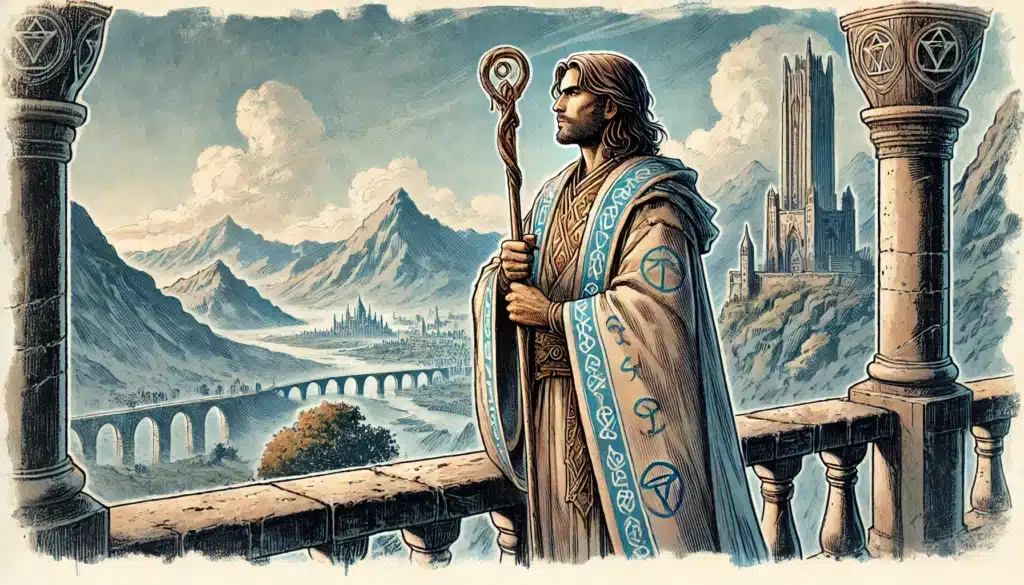
Using Loyalty in Gameplay
A loyalty score is more than a number on a sheet—it’s a tool for shaping the story’s living, breathing relationships. Let these scores inform gameplay in tangible but narratively rich ways. Perhaps a trusted ally gives a critical persuasion check a vital +2 bonus, or a spurned mentor skews an investigation with false leads. As the bonds flex, so too do the narrative possibilities.
Loyalty can function as a gatekeeper for secrets and side quests. An informant with a tepid score offers little beyond cursory gossip, but as trust builds, they tip off the players to forbidden tomes or underground contacts. Some of the best moments come from loyalty-driven surprises: an estranged brother comes to the rescue, or a would-be traitor redeems themselves when it matters most.
Adversely, low loyalty can actively hinder the party. A disgruntled henchman might withhold essential supplies, a deceived noble might sabotage a diplomatic mission, or a jealous rival might desert the party in the heat of battle. Strategic players will realize that maintaining trustworthy allies can be as powerful as any artifact.
⚔️ Fantasy RPG Random Tables Books
Make life as a Gamemaster easier…
If you play Dungeons & Dragons, Pathfinder, or other fantasy RPGs, this
RPG random tables series
is packed with encounters, NPCs, treasure, and more. Available in eBook or print—either way, you’ll have a wealth of adventure ideas at your fingertips.
Above all, loyalty scores should drive—but not replace—roleplay. Let the numbers offer guidance and tension, but build in opportunities for players to sway opinions with impassioned speeches, clever negotiation, or acts of selflessness.
12+ Examples of Loyalty-Based Gameplay Effects:
- A loyal knight arrives unexpectedly in battle to tip the scales.
- A suspicious townsfolk blocks access to a resource or contact.
- An allied mage provides critical magical information or a scroll.
- A jilted lover spreads damaging rumors that harm reputation.
- A trusted patron offers access to a secret base or safe house.
- A resentful bodyguard withholds healing potions in crisis.
- A fanatically loyal follower risks their life for the party.
- A neutral merchant raises prices or denies rare items.
- A respected ally vouches for PCs, unlocking restricted locations.
- A betrayed squire sabotages the party’s plans with false information.
- An endeared noble offers passage documents or diplomatic leverage.
- A rescued outcast pulls political strings only for trusted friends.
- A wary informant provides misleading clues unless won over.
Don’t let loyalty devolve into mere checkbox filling. The real magic comes from blending mechanical consequence with emotional stakes—loyalty should let relationships breathe, break, heal, and surprise.
Keep roleplay at the core: encourage players (and yourself) to treat loyal NPCs as more than resources. Let them matter, let them disappoint, and let their loyalty become a real thread in your campaign’s story.
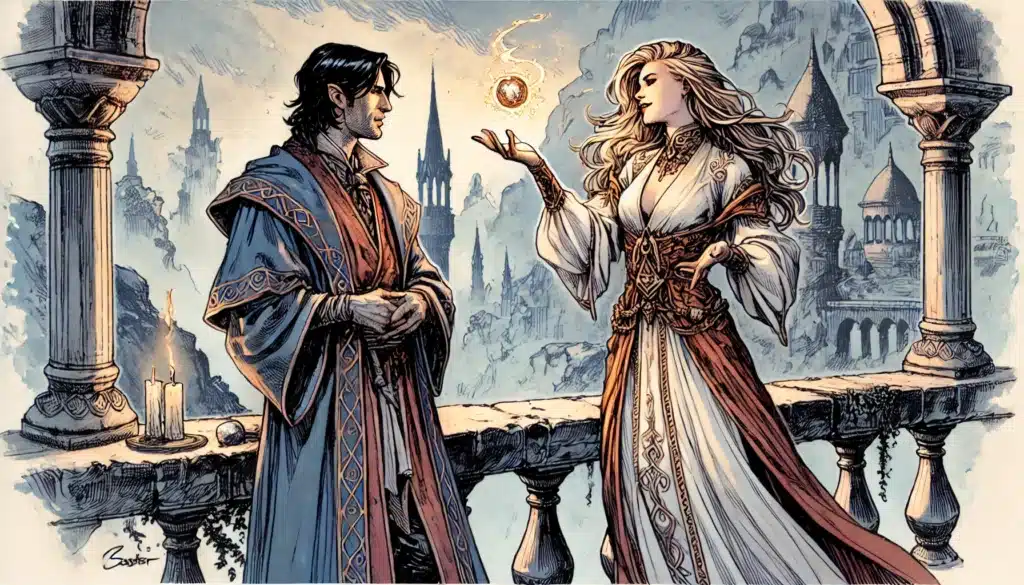
Factions and Group Loyalty
The advanced loyalty system doesn’t stop at individuals. In the roiling currents of fantasy politics and faction intrigue, tracking loyalty at the group or organizational level is invaluable. Whether players are wooing a thieves’ guild, a noble house, or a heretical cult, faction loyalty measures how they navigate power structures—and where alliances or grudges live or die.
Faction loyalty can be tracked in a few ways: some DMs focus on the views of the most influential leaders, while others prefer a collective meter representing the group’s consensus. It’s often wise to let the method match the narrative—personal sway over a crime boss might win you the gang, but some organizations are fractious, and winning over the rabble might matter more than currying favor with the chief.
Bear in mind that not all factions are monolithic. Players might win a town’s (or guild’s) loyalty by aiding the common folk, only to face sabotage from its ambitious elites—or vice versa. Letting faction loyalty have layers and tension gives your world a delicious unpredictability and realism.
Faction Loyalty Table:
| Faction Type | Loyalty Tracking Method | Benefits Unlocked |
|---|---|---|
| Thieves’ Guild | Leader-focused + key lieutenants | Discounted services, smuggling routes |
| Noble House | Collective meter with family heads | Military aid, legal protection, invitations |
| Adventurer’s Guild | Reputation tiers with roster votes | Rare contracts, shared resources |
| Religious Order | Dual: high priest + congregation | Divine magic, sanctuary, sacred items |
| Mercenary Company | Points spread by unit leaders | Troop backup, equipment, tactical info |
| Rebel Faction | Cell-based, trust per cell leader | Secret hideouts, sabotage, conspiracy plots |
Loyalty Benefits and Perks
High loyalty is more than a pat on the back—it’s a passport to rare opportunities and in-world advantages. Maybe it’s a coveted invitation to the masked ball in the Duke’s manor, a key to the ancient catacombs, or public endorsement from a temple that sways the masses. The system shines brightest when perks feel relevant to the NPC or faction and reinforce the hard-won nature of the relationship.
Even small perks—being welcome to crash at a safehouse, access to a private armory, or whispered rumors—add texture. The rarest rewards, like a family heirloom or an ancient spell, can feel earned and unique when given as tokens of deep trust.
Remember, loyalty perks need not (and should not) break the game. The best boons are often the ones that tie players deeper into the world, unlocking new quests, dilemmas, or personalized storylines.
12+ Loyalty Benefits:
- Discounted magic items from trusted vendors
- Backup mercenaries or elite troops in a pinch
- Letters of passage across borders or checkpoints
- Hidden escape routes through enemy territory
- Access to a rare family recipe (magical or mundane)
- Share of a spellbook or unique rituals
- Safe lodging in secret sanctuaries
- Early warnings of plots or danger
- Custom equipment or enchanted gear upgrades
- Influence on local politics or votes
- Invitations to private events or councils
- Unique mounts or transport
- Adoption into a noble house or secret society membership
- Access to ancient or forbidden tomes
Above all, keep perks valuable but not overpowering. Their true worth should stem from connection, not sheer mechanical advantage. Let loyalty-driven rewards drive curiosity, relationships, and stories, not just character power.
When the focus remains on shared bonds, loyalty becomes a living thread, connecting party and world in ways no +3 sword ever could.
Tracking and Managing Loyalty as a DM
The heartbeat of any loyalty system is organization—a tangle of growing and ebbing affections can quickly become overwhelming if left unmanaged. Savvy DMs keep notes: whether it’s a simple spreadsheet, color-coded index cards, or elaborate relationship maps, tracking who trusts whom is essential for remembering past deeds and driving story beats.
Digital campaign managers and platforms (like World Anvil or Notion) can house elaborate logs. Low-fi DMs might keep loyalty scores jotted beside each NPC’s name or use color-coded dots on paper maps. Adapt your method to campaign scale—an episodic game with a few recurring faces needs less rigor than a political drama bursting with intrigue.
Scalability is key. For shorter or more action-driven campaigns, focus loyalty efforts on core contacts. In sprawling, intrigue-filled chronicles, break loyalty down by regions, guilds, or even cross-reference with timelines of key events. The right level of detail helps, but clarity is better than complexity for complexity’s sake.
10+ Tracking Techniques or Tools:
- Index cards with NPC names and color-coded loyalty levels
- Excel or Google Sheets with loyalty columns and notes
- Dedicated campaign notebooks with “relationship logs”
- Sticky notes on maps or DM screens
- Digital campaign organizers (World Anvil, Notion, Obsidian)
- NPC character sheets with dedicated loyalty fields
- Custom icons or tokens on virtual tabletops
- Timeline journals tracking loyalty changes by session/date
- Tags or labels in RPG companion apps
- Voice memos for rapid post-game updates
- Hand-drawn relationship webs/flowcharts with arrows and scores
Consistency is vital: update loyalty after big moments, and let players see the world remember their deeds. Arbitrariness sours engagement; but timely, fair consequences create immersion and excitement.
Make changes to loyalty in response to actual events, and let narrative timing magnify their impact. That moment when an ally chooses a side, for good or ill, lands hardest when it fits the rhythm of the story.
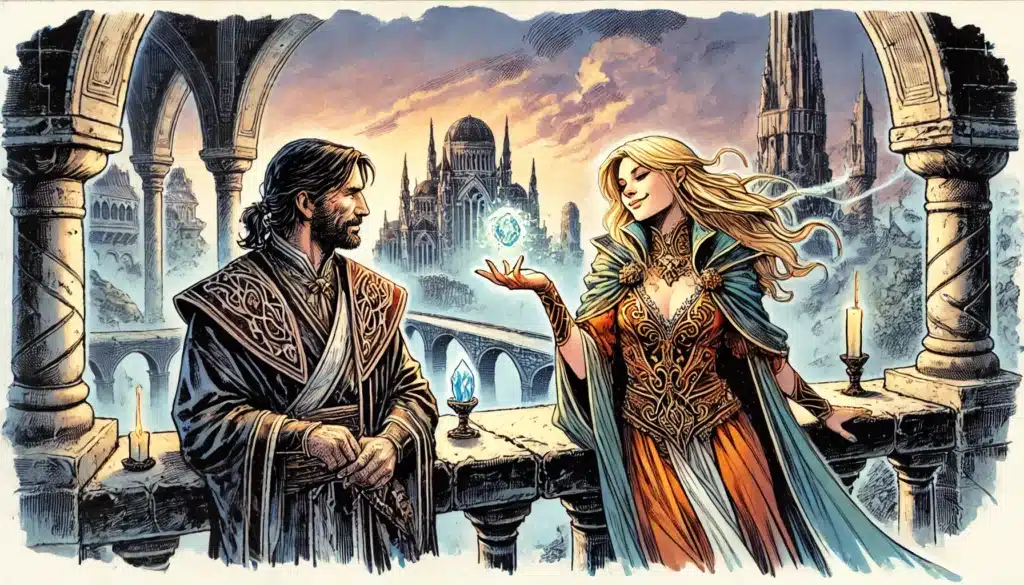
Final Thoughts: Bringing Loyalty to Life
At its heart, an advanced NPC loyalty system is more than a mechanical tracker—it’s a philosophy for crafting worlds packed with memory, motivation, and surprise. It invites players to invest not just in gold pieces or XP, but in relationships that transcend the transactional. Suddenly, a bartender’s trust or a rival’s bitterness can shape your story as powerfully as any critical hit.
Try my AI Tabletop RPG generators...and an extensive library of content!
Done right, loyalty weaves an invisible thread through your campaign. Actions ripple outward, echoing from dusty villages to shadowy palaces. When the party returns years later, and old friends greet them—or old wounds fester—it’s the lived history of loyalty in action. Narrative consequence sharpens each decision, adding fuel to both celebration and regret.
In the end, loyalty isn’t just a number on a ledger. It’s a story, a risk, a hope. An NPC who would die for your party isn’t just useful; their devotion hurts and delights in equal measure. A scorned mentor doesn’t simply shut doors—they haunt dreams, offering the chance for redemption or revenge. Let these emotional beats breathe through every point gained or lost.
This isn’t about making relationships transactional. It’s about making them tangible—giving players clear ways to seek connection and clear feedback when they falter. Mercy, betrayal, generosity, and pride: all can be measured, not just as points, but as story.
Give your world room to remember. Let loyalty reward and wound. Because, in the end, those living, breathing bonds are what make a campaign unforgettable.


